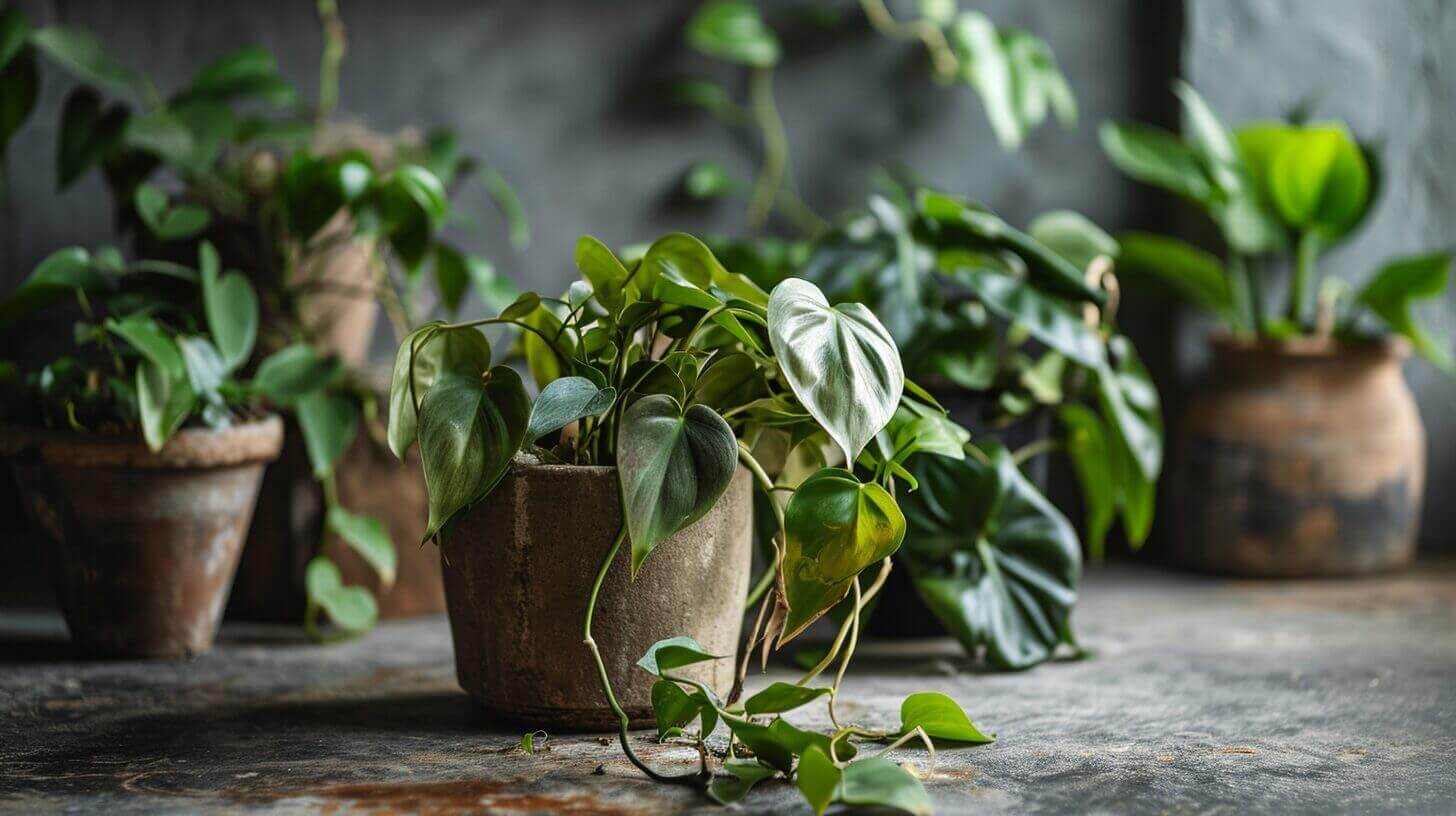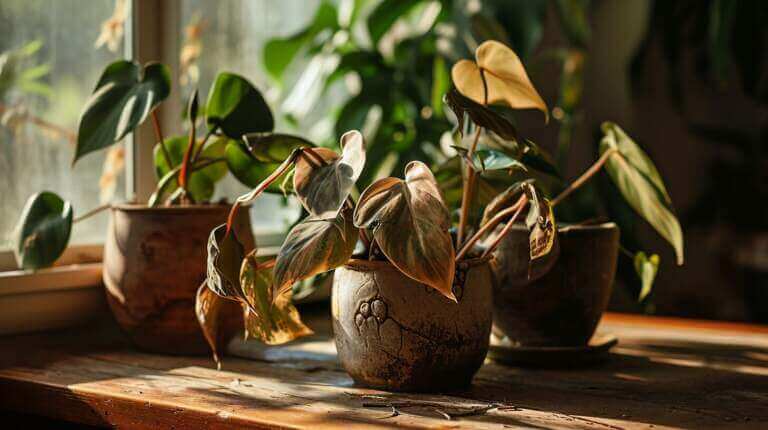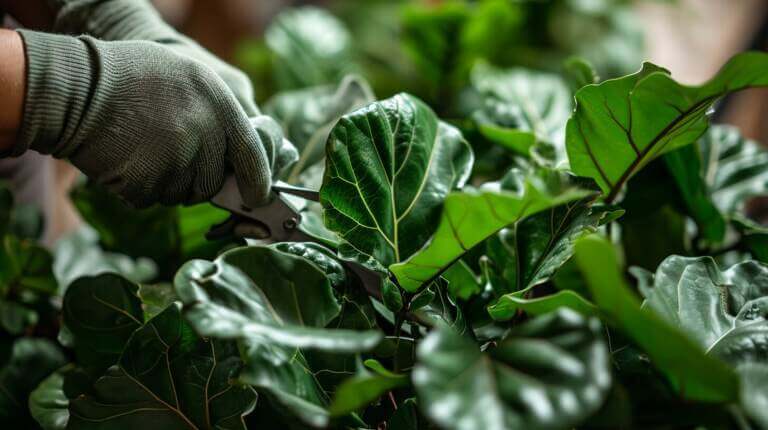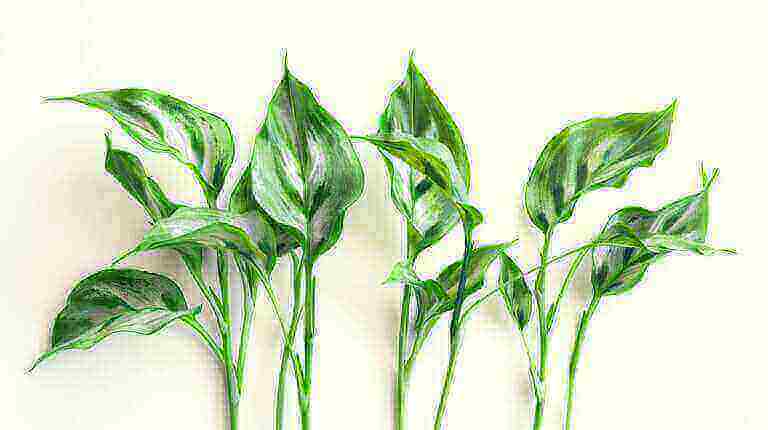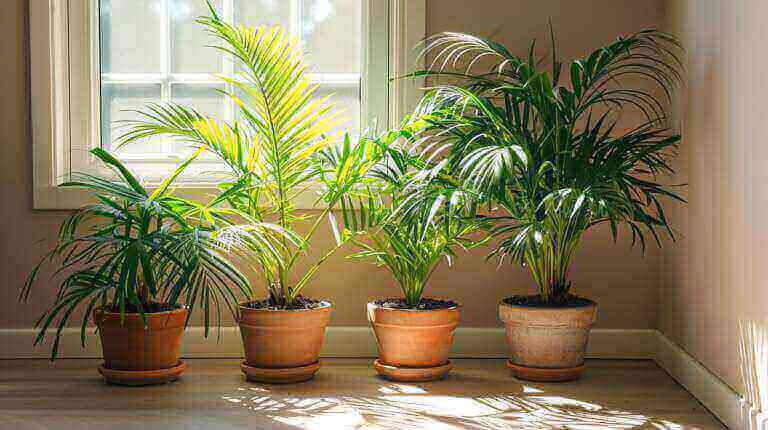Why Your Philodendron Leaves Are Drooping and How To Fix Philodendron Drooping
Are your philodendron leaves looking a bit downcast lately? Don’t worry, you’re not alone. Drooping leaves are a common issue faced by plant enthusiasts.
But fear not, for in this article, we will shed light on the various reasons behind this leafy dilemma and provide you with practical solutions to revive your beloved philodendron.
From overwatering and underwatering to poor lighting and nutrient deficiencies, we’ve got you covered.
So grab your gardening gloves and let’s get to the root of the problem!
Key Takeaways
- Overwatering is a common cause of drooping philodendron leaves, leading to root rot and other signs such as yellowing leaves and mushy roots.
- Underwatering can also cause drooping leaves in philodendrons, as it leads to dehydration and nutrient deficiency.
- Poor lighting, particularly insufficient bright, indirect sunlight, can contribute to leaf droop in philodendrons.
- Nutrient deficiencies, often caused by poor soil quality or improper fertilization, can affect the appearance of philodendron leaves, leading to yellowing or discolored leaves and weak stems.
Overwatering: Causes of Philodendron Drooping Leaves
Overwatering is the main reason why philodendron leaves droop. One of the most common mistakes made by philodendron owners is giving their plants too much water. Philodendrons are tropical plants that thrive in moist but well-draining soil. When the soil is constantly saturated with water, it can lead to root rot, which in turn causes the leaves to droop. Signs of overwatering include yellowing leaves, mushy or brown roots, and a foul odor coming from the soil.
To fix this issue, it is important to adjust your watering routine. Allow the top inch of soil to dry out before watering your philodendron again. Additionally, make sure that your pot has drainage holes to prevent water from accumulating at the bottom. By addressing the issue of overwatering, you can help your philodendron regain its health and vitality.
Transition:
While overwatering can cause drooping leaves, underwatering can also have a similar effect. Let’s explore the underwatering woes and how drought can cause leaf droop in the next section.
Underwatering Woes: Common Causes of Philodendron to Droop
Underwatering, along with overwatering, can be a factor that causes drooping leaves in philodendron plants. While overwatering can lead to root rot and suffocation, underwatering can result in dehydration and nutrient deficiency. When a philodendron is not given enough water, its leaves may start to droop as a survival mechanism to conserve moisture. In addition to drooping, underwatered leaves may also become discolored, turning yellow or brown. This is due to the lack of water and nutrients reaching the leaves, causing them to dry out and die. To prevent leaf droop caused by underwatering, it is important to establish a regular watering schedule and ensure the plant receives adequate moisture. Monitoring the moisture levels in the soil and adjusting watering frequency accordingly can help maintain a healthy philodendron.
| Underwatering Consequences | Leaf Discoloration due to Underwatering |
|---|---|
| – Dehydration | – Yellowing |
| – Nutrient Deficiency | – Browning |
Poor Lighting: Shedding Light on the Reason for Drooping Leaves
Insufficient lighting, combined with improper watering, can contribute to the drooping of leaves in philodendron plants. Proper positioning is crucial to optimize growth and prevent leaf droop.
Philodendrons thrive in bright, indirect sunlight. Place your philodendron near a window where it can receive filtered light throughout the day. Avoid exposing it to direct sunlight, as it can scorch the leaves. If you don’t have access to natural light, artificial lighting can be a suitable alternative. LED grow lights or fluorescent lights with a spectrum similar to natural sunlight can provide the necessary light for your philodendron.
Ensure that the lights are positioned at an appropriate distance from the plant to avoid burning the leaves. By providing adequate and properly positioned lighting, you can prevent leaf droop and promote healthy philodendron growth indoors.
Nutrient Deficiencies: Causes of Droopy Leaves
However, a lack of proper nutrients in the soil can also contribute to the lackluster appearance of philodendron leaves. Nutrient deficiencies can hinder the growth and vitality of your plants, making it important to address them promptly.
Here are three key points to consider when treating deficiencies:
- Symptoms: Look out for yellowing or discolored leaves, stunted growth, and weak stems. These are common signs of nutrient deficiencies in philodendrons.
- Causes: Nutrient deficiencies can occur due to various factors, such as poor soil quality, improper fertilization, or excessive leaching. Understanding the underlying cause is crucial in determining the best treatment approach.
- Treating deficiencies: To address nutrient deficiencies, consider using a balanced fertilizer specifically formulated for philodendrons. Apply it according to the instructions provided by the manufacturer. Additionally, ensure that your plant is placed in well-draining soil and receives adequate sunlight.
Pests and Diseases: Dealing With Uninvited Guests and Their Effects on Philodendron Leaves
What are some effective strategies for managing pests and diseases that can cause damage to philodendron leaves?
Controlling pests and preventing diseases are essential for maintaining the health and vitality of your philodendron plants. To effectively control pests, it is important to regularly inspect your plants for any signs of infestation. Common pests that affect philodendron leaves include mealybugs, spider mites, and aphids.
To combat these pests, you can use natural remedies such as neem oil or insecticidal soap. Additionally, practicing good hygiene by removing any dead or decaying plant matter can help prevent the spread of diseases. It is also crucial to provide proper air circulation and avoid overwatering, as fungal diseases thrive in humid conditions.
Frequently Asked Questions
Is Guttation the Cause of Philodendron Leaves Dripping Water?
The phenomenon known as guttation in philodendron leaves occurs when water droplets form and drip from the tips of the leaf edges. Guttation is caused by the plant’s natural process of excreting excess water and can be mistaken for dew or plant diseases. It is a normal occurrence and signifies a healthy plant, actively regulating its water levels.
Can a Lack of Humidity Cause Philodendron Leaves to Droop?
A lack of humidity can indeed cause philodendron leaves to droop. Philodendrons are tropical plants that thrive in high humidity environments. When the air is dry, the leaves lose moisture faster than they can absorb it, leading to wilting and drooping.
To increase humidity levels for philodendrons, you can place a humidifier nearby or mist the leaves regularly. Another option is to group your philodendron with other plants to create a microclimate of higher humidity.
What Are the Signs of Nutrient Deficiencies in Philodendron Plants?
Nutrient deficiencies in philodendron plants can manifest through various signs. Common deficiencies include:
- Yellowing or browning of leaves
- Stunted growth
- Leaf drop
To provide proper nutrition, it is crucial to understand the specific nutrient needs of philodendrons. This can be achieved by:
- Using a balanced fertilizer formulated for houseplants
- Following the recommended dosage
- Regularly monitoring and adjusting the pH of the soil
Additionally, providing adequate:
- Sunlight
- Water
- Proper drainage
are essential for maintaining overall plant health.
What are the common reasons for philodendron drooping?
The most common reasons for a philodendron to droop include overwatering, low humidity, and exposure to cold drafts. It’s important to keep the plant in a suitable environment with indirect light and proper humidity levels.
Why are my philodendron leaves drooping even though I water the plant regularly?
Overwatering your philodendron can cause the plant’s leaves to start drooping. Always check if the top 2-3 inches of soil is dry before watering your plant.
How does low humidity affect my philodendron?
Low humidity can cause the foliage of your philodendron to curl and droop. Indoor plants like philodendrons prefer a higher humidity level.
What should I do if my philodendron is drooping?
If your philodendron is drooping, it may be necessary to repot your philodendron or move the plant to a location with more suitable conditions such as indirect light and higher humidity.
How does fertilizer affect my drooping philodendrons?
Incorrect use of fertilizer can result in drooping leaves. It’s important to use the right amount of fertilizer to prevent drooping and maintain healthy growth.
Why are my philodendron’s leaves turning brown?
Brown leaf spots in a philodendron may be a sign of root rot or a fungal infection, often caused by overwatering.
How much water does a philodendron need?
The amount of water your plant needs can depend on its size and the conditions of its environment. Overwatering can cause limp leaves and lead to a droopy philodendron.
What are the common causes of a drooping philodendron birkin?
Common causes of a drooping Philodendron Birkin include overwatering, under-watering, low humidity, or exposure to cold drafts.
How do I prevent my philodendron from wilting?
To prevent wilting, ensure that your plant is receiving the right amount of water and light, and is kept away from cold drafts.
Why do the leaves start drooping even though I repotted my houseplant recently?
Repotting can sometimes stress a plant causing its leaves to droop. Ensure you have used fresh potting soil and given the plant adequate water post repotting.

